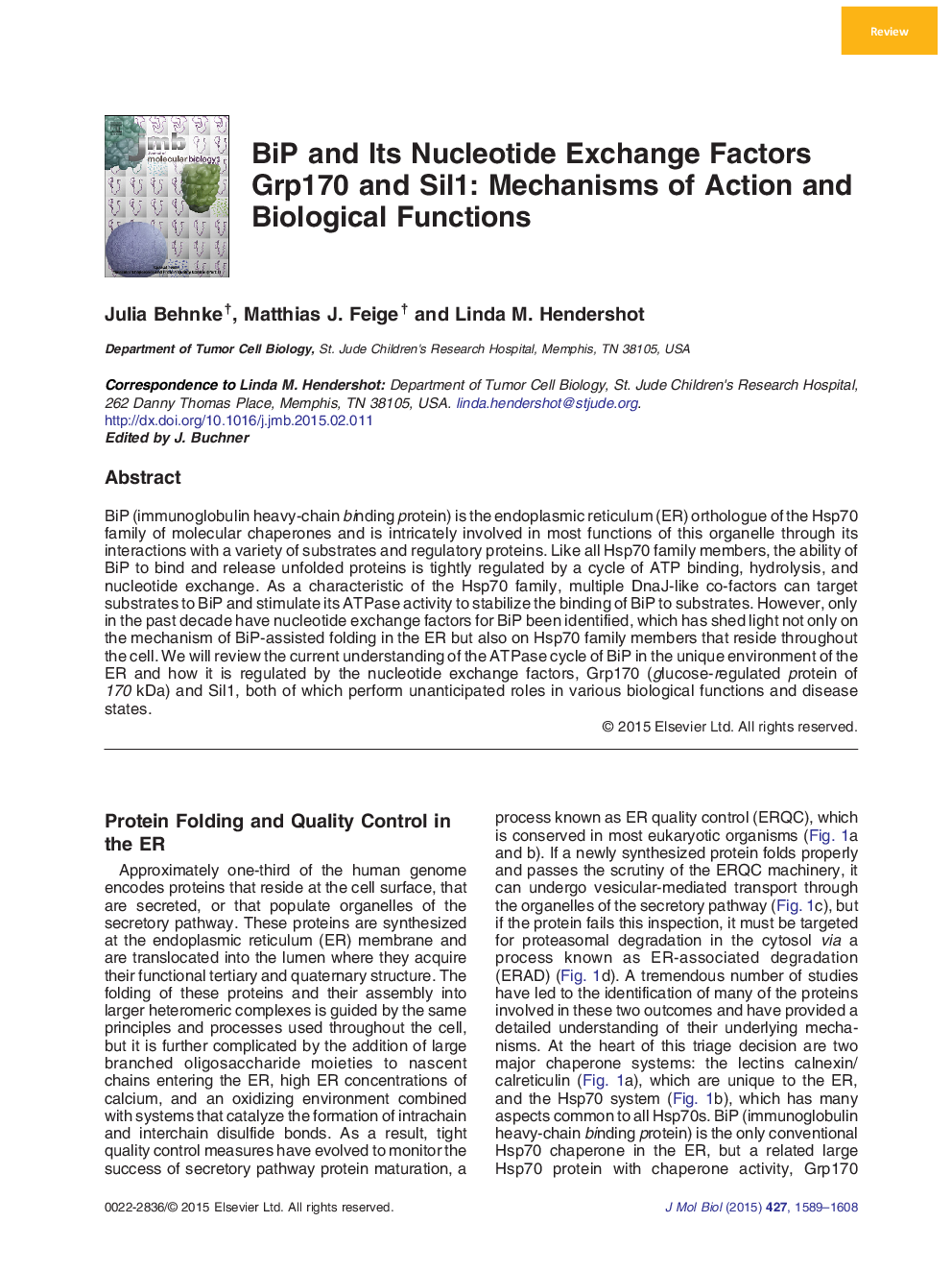| Article ID | Journal | Published Year | Pages | File Type |
|---|---|---|---|---|
| 2184536 | Journal of Molecular Biology | 2015 | 20 Pages |
•Structural and mechanistic insights into the Hsp70 ATPase cycle are reviewed.•The influence of the ER environment on the ATPase cycle of BiP is discussed.•Mechanisms of nucleotide exchange in BiP by Sil1 and Grp170 are reviewed.•Our current understanding of the Grp170 chaperone function is presented.•Biological functions and associated pathologies of Sil1 and Grp170 are reviewed.
BiP (immunoglobulin heavy-chain binding protein) is the endoplasmic reticulum (ER) orthologue of the Hsp70 family of molecular chaperones and is intricately involved in most functions of this organelle through its interactions with a variety of substrates and regulatory proteins. Like all Hsp70 family members, the ability of BiP to bind and release unfolded proteins is tightly regulated by a cycle of ATP binding, hydrolysis, and nucleotide exchange. As a characteristic of the Hsp70 family, multiple DnaJ-like co-factors can target substrates to BiP and stimulate its ATPase activity to stabilize the binding of BiP to substrates. However, only in the past decade have nucleotide exchange factors for BiP been identified, which has shed light not only on the mechanism of BiP-assisted folding in the ER but also on Hsp70 family members that reside throughout the cell. We will review the current understanding of the ATPase cycle of BiP in the unique environment of the ER and how it is regulated by the nucleotide exchange factors, Grp170 (glucose-regulated protein of 170 kDa) and Sil1, both of which perform unanticipated roles in various biological functions and disease states.
Graphical abstractFigure optionsDownload full-size imageDownload high-quality image (163 K)Download as PowerPoint slide
